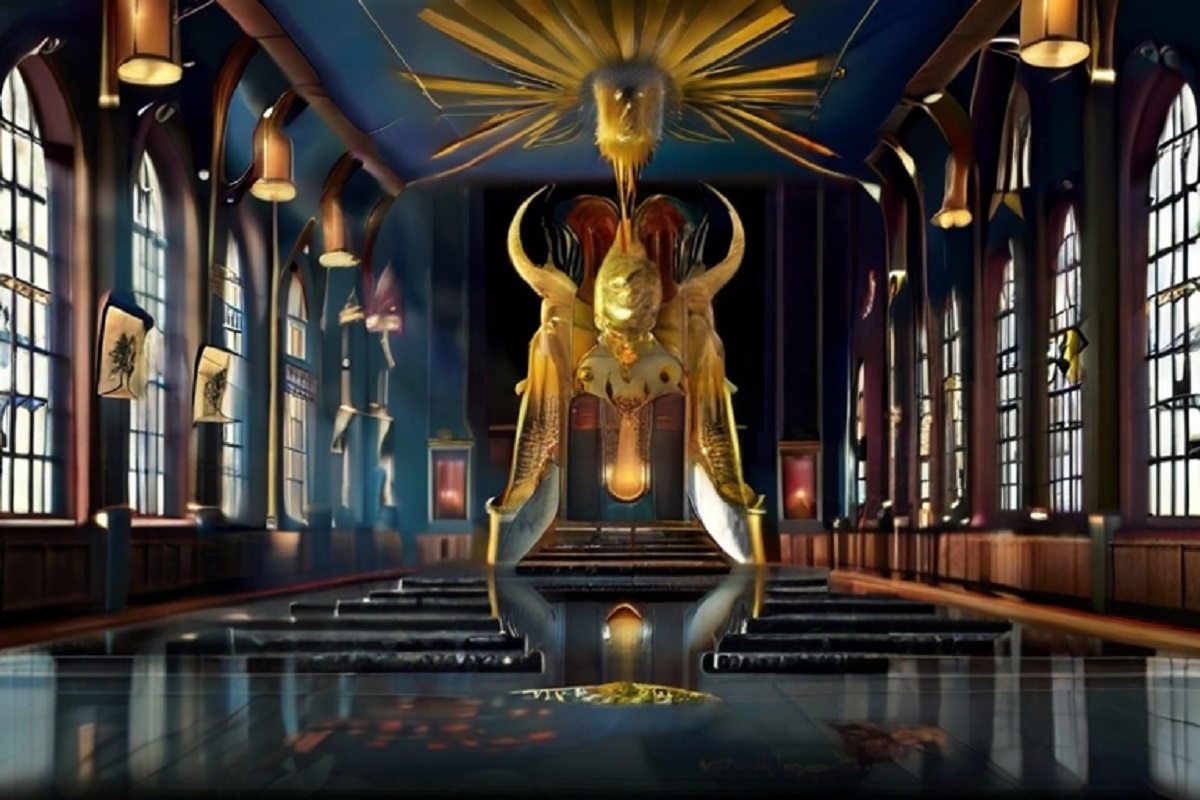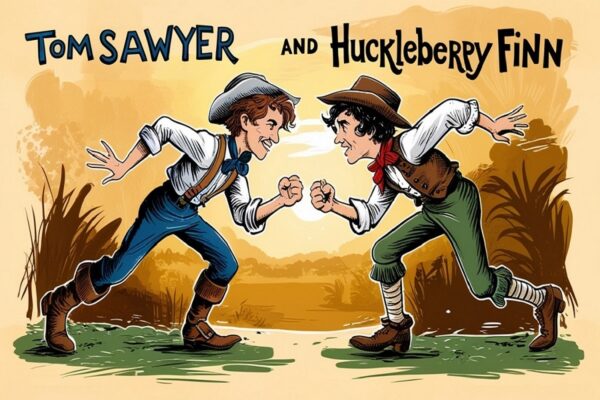The School for Good and Evil is a captivating fantasy series by Soman Chainani, first published in 2013. This enchanting novel explores the intricate balance between good and evil, friendship, and self-discovery. Set in a magical world, it takes readers on an unexpected journey alongside two best friends who find themselves enrolled in a school designed to train children as fairy tale heroes or villains. In this summary, we will delve into the important elements, characters, and themes of this remarkable book, The School for Good and Evil.

The School for Good and Evil Summary
In the village of Gavaldon, a puzzling occurrence takes place every four years. Two children are mysteriously snatched and transported to the legendary School for Good and Evil. This extraordinary institution is nestled in a captivating and distant forest. It imparts training to young students intending to mold them into either heroes or villains in fairy tales.
Sophie ardently believes that her true destiny lies within the hallowed halls of the School for Good. She is a girl captivated by beauty and aspiring to be a princess. Meanwhile, her closest companion Agatha wholeheartedly believes she belongs in the School for Evil.
But when their village is unexpectedly upended, the friends find themselves on opposite paths. Sophie is sent to the School for Evil and Agatha to the School for Good. This unexpected turn of events sets off a series of tests, transformations, and discoveries that challenge their beliefs about good and evil.
Initially, Agatha faces rejection because of her appearance and gloomy disposition. However, she develops authentic friendships with her roommates. Later, they understand that judging based on appearances is misleading.
On the other hand, Sophie’s aspiration to be a princess begins to unravel as she experiences the harsh truth within the School for Evil. Determined to prove her goodness, Sophie strives to find a way back to Gavaldon as a princess.
Throughout the story, Sophie and Agatha meet a range of fairy tale characters and magical creatures. They face difficult trials that push them to discover their inner courage. Along the way, they start to question their belief in clear-cut notions of good versus evil. They interact with fellow students. For example, Tedros is a reluctant prince, and Hester is a strong-willed and misunderstood girl. These encounters lead Sophie and Agatha to unravel the intricate layers of their identities.
Sophie and Agatha’s journeys eventually converge as they navigate a series of challenges, culminating in the pivotal Trial by Tale. During this pivotal event, students must confront their deepest fears and grapple with their true identities. The bond between Sophie and Agatha is tested to its limits as they strive to find their roles in this enchanting world. They uncover the genuine essence of being heroes or villains.
In a surprising twist, Sophie and Agatha find themselves in unexpected roles once more, questioning their identities and destinies. The unraveling of the school’s enigmas and the revelations about its enigmatic headmistress are pursued by them. The girls are confronted with their innermost desires, fears, and the blurred distinction between morality and malevolence.
In the final battle, Sophie and Agatha must join forces. They must conquer the darkness that looms over their world. Their unbreakable bond is pivotal. It helps reveal secrets about their school’s start and protects their friends. It also saves the whole realm from a coming disaster.
Hurray! We came to the end of the summary of The School for Good and Evil.
Characters of The School for Good and Evil
The above summary of Soman Chainani’s The School for Good and Evil itself introduces a range of characters, each with their own unique qualities and roles. Let’s take a closer look at some of these key characters:
1. Sophie: At the beginning of the story, the protagonist fits into the stereotypical mold of being beautiful and kind-hearted. Her aspiration is to attend the School for Good in order to become a princess. However, as her journey progresses, she begins to question her beliefs and discover her inner strength, leading to a transformation in character.
2. Agatha: Sophie, despite being perceived as ugly and gloomy, proves her inner goodness through her unwavering loyalty and determination. These qualities defy the stereotypes associated with the School for Evil.
3. Dean Hester: The role of the school master extends beyond merely educating students. They play a crucial part in guiding and shaping their destinies, encouraging them to question and challenge societal norms.
4. Tedros: Tedros, the prince in this fairytale family, grapples with the conflict between societal expectations and his own authentic self. His character symbolizes the delicate balance and blurred distinction between good and evil within the narrative.
5. The School Master: The School Master, a central antagonist in the story, is both mysterious and manipulative. He carefully orchestrates events within the schools to ensure a delicate balance between Good and Evil is maintained.
6. The Woodsman: The Woodsman is a captivating and complex character who defies stereotypes, adding depth to the story’s examination of morality.
The characters in this story experience personal growth and transformation, challenging conventional fairytale conventions. The narrative prompts readers to question predetermined roles and contemplate the intricacies of goodness and evil in both characters and society.
Themes of The School for Good and Evil
The School for Good and Evil book and its summary above explore several thought-provoking themes:
1. Friendship: At the heart of the story lies a profound friendship between Sophie and Agatha. Despite their contrasting personalities, their connection remains unwavering as they navigate the trials of school life and uncover surprising truths about themselves.
2. Identity and Self-Discovery: Throughout their journeys, the characters embark on a profound quest of self-discovery, compelling them to question and redefine their very identities. Sophie and Agatha glean the invaluable realization that their outer appearances hold no bearing on who they are as individuals; instead, what truly matters is the impact of their actions and the depth of their character.
3. Good vs. Evil: In the novel, the distinction between good and evil is challenged as the lines between the two become blurred. Characters in the story often display traits that encompass both sides, emphasizing the intricate nature of humanity.
4. Appearance vs. Reality: Throughout the story, there is a recurring theme that highlights the deceptive nature of appearances. The characters frequently conceal their true essence and motives behind outward facades.
5. Fairy Tale Tropes: The novel takes apart and challenges conventional fairy tale conventions. It raises doubts about the roles and expectations of heroes and villains in familiar tales, offering a new viewpoint on these well-known narratives.
Quotes from The School for Good and Evil
Here are a few quotes from The School for Good and Evil by Soman Chainani:
- “The only way to write is like you’re living a fairy tale backwards.” – Agatha
- “But we were made for this, to see what nobody else sees.” – Sophie
- “Maybe we’re all a little dark inside.” – Tedros
- “People don’t change. They just become more what they are.” – Professor Clarissa Dovey
- “In fairy tales, the good girls get their happily ever afters and the bad girls are punished.” – Sophie
- “But fairy tales aren’t about what happened. They’re about what’s going to happen.” – Hester
- “The less you know, the more you fear.” – Beatrix
- “Sometimes the way to be good is to be bad.” – Beatrix
- “In a world without villains, someone has to be one.” – Sophie
- “It’s not what you are that counts, it’s what you do.” – Agatha
These quotes highlight the recurring themes of identity, destiny, and the intricate nature of the characters in the story.
The School for Good and Evil Books in Order
If you want to read The School for Good and Evil books in order, then you can use the list below:
1. The School for Good and Evil
2. A World Without Princes
3. The Last Ever After
4. Quests for Glory
5. A Crystal of Time
6. One True King
7. Rise of the School for Good and Evil
8. Fall of the School for Good and Evil
The series comprises eight books in total. The first six books form a cohesive narrative, while the last two serve as prequels. These prequels delve into the fascinating backstory of the School for Good and Evil’s creation and introduce key characters from the main series.
For those new to the series, it is recommended to read the first six books in sequence. If you’re curious about the school’s history, you can explore the prequels at a later time.
The School for Good and Evil: Book and Movie Differences
After reading the summary of The School for Good and Evil book, let’s delve into the differences found in its movie adaptation. The movie exhibits several notable differences, both significant and minor. Notable among these distinctions are the following:
- Selection Process for Students: In the book, a mysterious creature kidnaps students every four years, escorting them to the school. Conversely, in the movie, students are chosen based on their familial lineage.
- The School Master: In the book, the enigmatic School Master remains a mystery until the story’s culmination. But, the School Master is introduced much earlier in the movie.
- Relationship between Sophie and Agatha: In the book, Sophie and Agatha start off as best friends. However, in the movie adaptation, their friendship undergoes strain and they initially find themselves as rivals.
- Final Battle: The final battle in the book and the movie unfolds differently for Sophie, Agatha, and the School Master. In the book, Sophie achieves victory by utilizing her true love’s kiss, which leads to the demise of the School Master. Conversely, the movie depicts a collaborative effort between Sophie and Agatha as they join forces to overcome the School Master. Ultimately, this joint endeavor results in the School Master’s redemption.
The School for Good and Evil: Major Book and Movie Differences
- Honora: In the book, Sophie’s stepmother portrays kindness and love. While in the movie, her character takes a dark turn, revealing a cruel and wicked nature.
- August Sader: This major character in the book is removed from the movie.
- Lady Lesso: Lady Lesso replaces Evelyn Sader as the Dean of the School for Evil in the movie.
- The Circus of Talents: This major event in the book is removed from the movie.
- Tedros and Agatha’s Relationship: Tedros and Agatha initially harbor animosity towards each other in the book. However, their feelings gradually transform into a deep and passionate love. Conversely, in the movie adaptation, their relationship starts off on a more amicable note.
Readers’ and Viewers’ Thoughts on The School for Good and Evil Book and Movie Differences
Here are some additional thoughts on the book and movie differences:
- Some readers have expressed criticism towards the adaptation of the book, claiming that the movie portrays Sophie as more likable and Agatha as less likable. Sophie tends to be more focused on herself while Agatha is known for her selflessness. Whereas the film alters this dynamic, potentially appealing to certain viewers while possibly alienating others.
- The movie delves deeper into the School Master’s backstory, revealing his intricate connection with Sophie and Agatha. While this addition brings an intriguing dimension to the story, it does compromise some of the book’s enigmatic allure and thrilling suspense.
- The movie adaptation of The School for Good and Evil is an enjoyable and visually stunning film, appealing to both fans of the book and newcomers to the story. It is worth noting, however, that the movie diverges from the original material, incorporating significant changes. Therefore, fans of the book should be prepared for this alteration.
In summary, The School for Good and Evil brings readers on a spellbinding adventure into a world that challenges conventional notions of good versus evil. As readers join Sophie and Agatha in navigating the school’s trials and discovering their true identities, they are prompted to contemplate the intricacies of human nature and the immense power of friendship.
Recommended: Inkheart by Cornelia Funke | Summary, Themes, and Quotes



